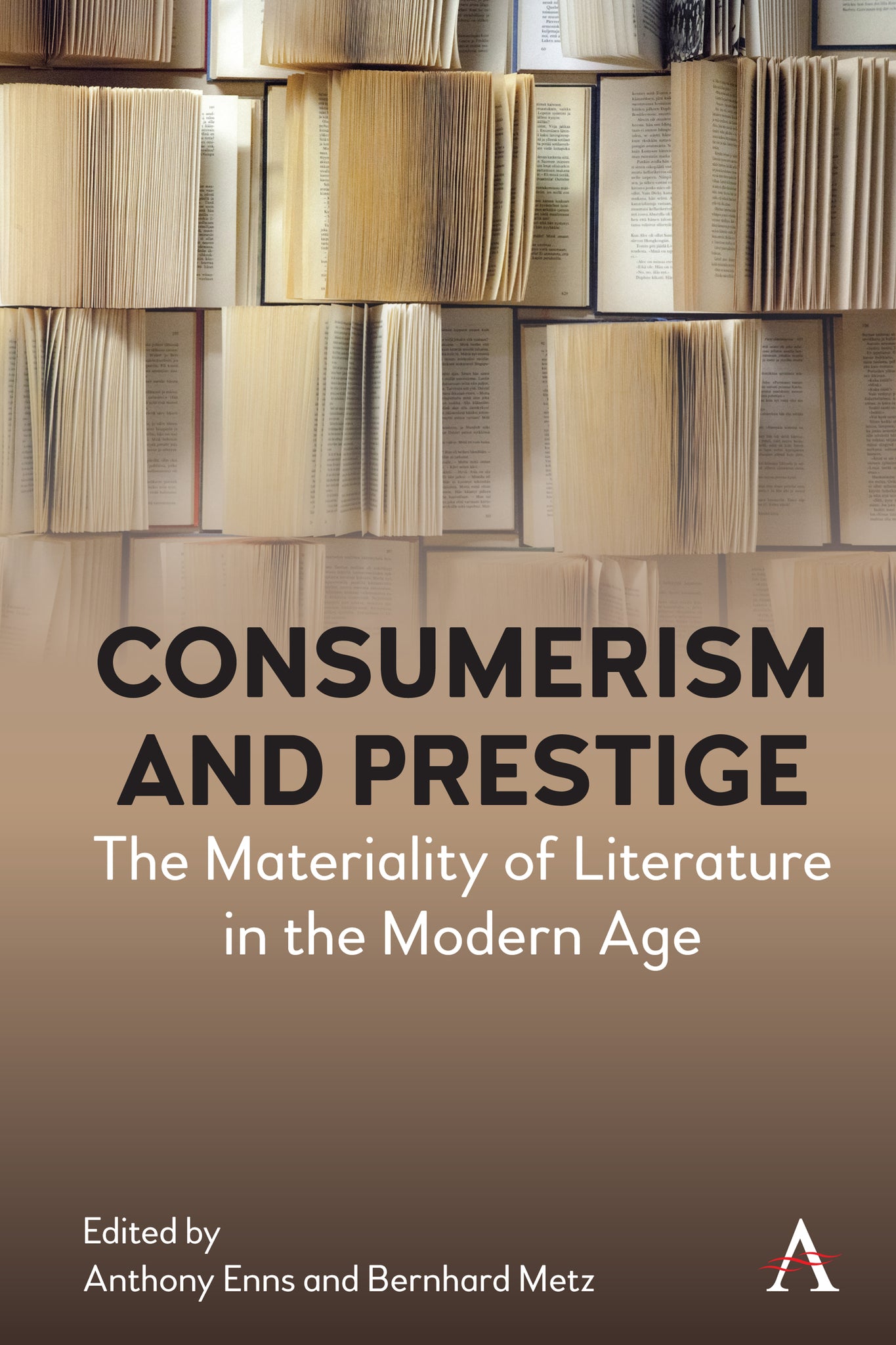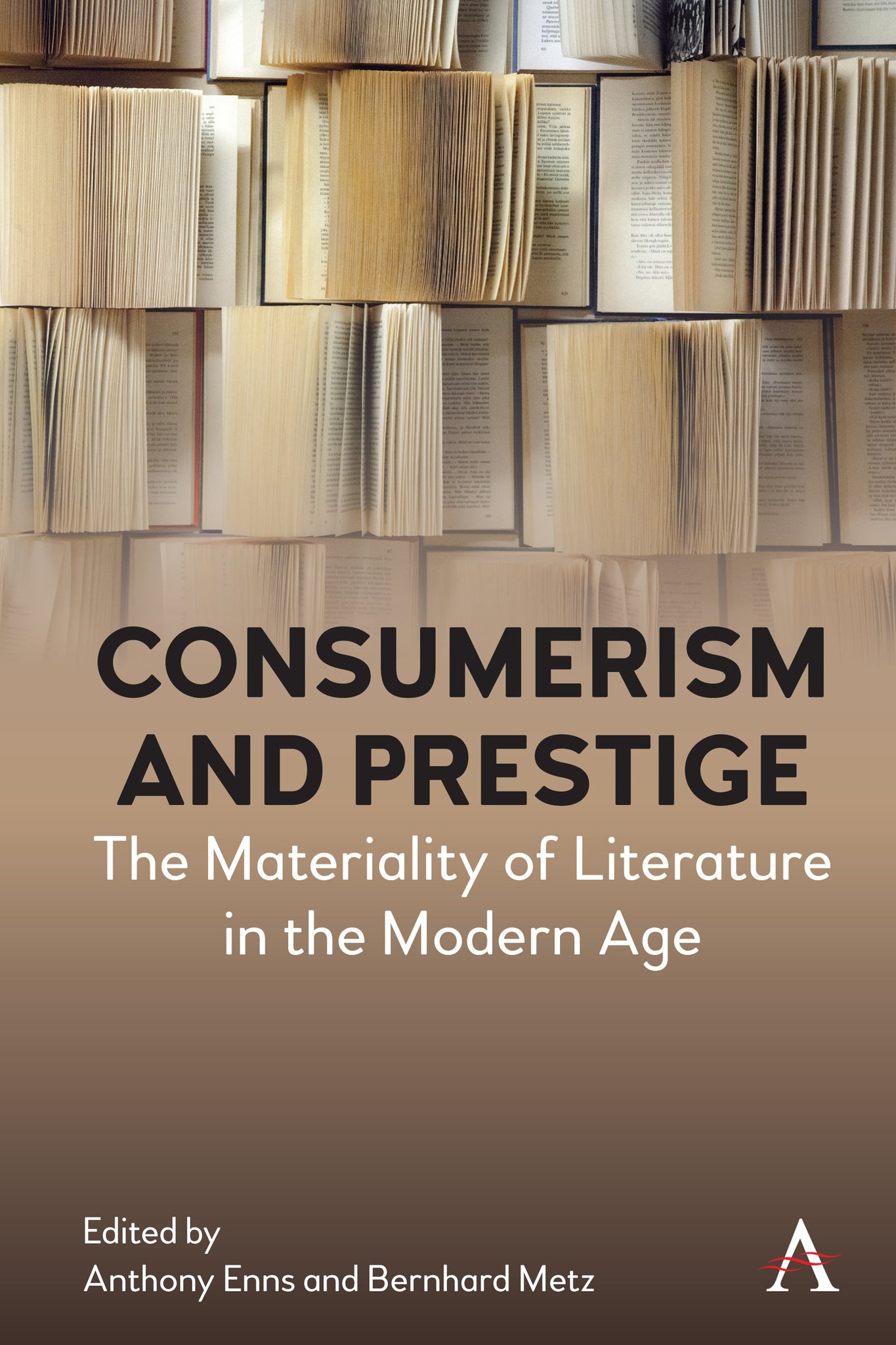We're sorry. An error has occurred
Please cancel or retry.
Consumerism and Prestige

Some error occured while loading the Quick View. Please close the Quick View and try reloading the page.
Couldn't load pickup availability
- Format:
-
05 July 2022

This anthology explores the relationships and interdependencies between literary production and distinctions of taste by examining how the material aspects of literary texts, such as the cover, binding, typography and paper stock, reflect or even determine their cultural status. In many cases, for example, the distinctions between “highbrow” and “lowbrow” taste have little to do with the content of the texts themselves, as books often function as markers of socioeconomic status, like clothing or home décor. One might even go so far as to say that the concept of literary taste is more closely related to fashion sense than critical judgment. The anthology seeks to address this claim by examining how the tensions between consumerism and prestige reflect fundamental historical changes with regard to the development of technology, literacy and social power.

LITERARY CRITICISM / Books & Reading, Literature: history and criticism

“A valuable international contribution to understanding how the materiality of book publishing is closely tied to social systems of taste and prestige.” – Professor Andrew Piper, Languages, Literatures, and Cultures, McGill University, Canada.
Acknowledgments; Contributors; Introduction: Consumerism and Prestige; Section One. MATERIAL FORMS AND LITERARYPUBLISHING, Chapter 1. Devotion and Consumption: Ludwig Tieck, Literary Pocketbooks, and the Novella Craze, Christoph Rauen; Chapter 2. Packaging Process: Peter Handke’s Writing for Sale; 3 Jacob Haubenreich, Chapter 3. Contrasts in the Brazilian Book Market in the Early Twenty-First Century , Laura Rivas Gagliardi; Section Two. MATERIAL DISTINCTIONS INPOPULAR FICTION; Chapter 4. Only the “Outward Appearance” of a Harem? , eading Memoirs of an Arabian Princess as a Material Text, Kate Roy; Chapter 5 Hidden Codes of Love: The Materiality of the Category Romance Novel, An Goris; Chapter 6. Stephen King’s The Girl Who Loved Tom Gordon: A Rhetorical Reading of the Schneekluth Edition Dust Jackets, Thorsten Bothe; Section Three. CULTURAL PRESTIGE ANDGRAPHIC NARRATIVES; Chapter 7. The Printing of Phantasms: The Illustrations of Nineteenth-Century Serialized Novels and their Appropriation in Max Ernst’s Collage Novel Une semaine de bonté, Philipp Venghaus; Chapter 8. From Penny Dreadful to Graphic Novel: Alan Moore and Kevin O’Neill’s Genealogy of Comics in The League of Extraordinary Gentlemen, Jeff Thoss; Chapter 9. Comic Books versus Graphic Novels: Commodity Forms and Cultural Prestige, Anthony Enns; Section Four. ELECTRONIC PUBLISHING ANDREADING PRACTICES; Chapter 10. The Book and the E-Book: Footnotes, Margins, and Typography in The Brief Wondrous Life of Oscar Wao, Bernhard Metz; Chapter 11. E-Book Collections as an Opportunity to Recover Unpublished or Forgotten Texts, Laura Hatry; Chapter 12. How Much Does the Symbolic Capital of Books Cost? Operationalizing the Prestige of Books in the Digital Age, Pasqualina Sorrentino and Massimo Salgaro; Index



